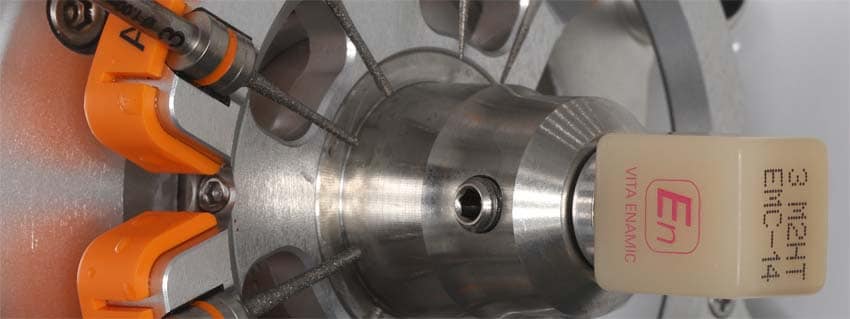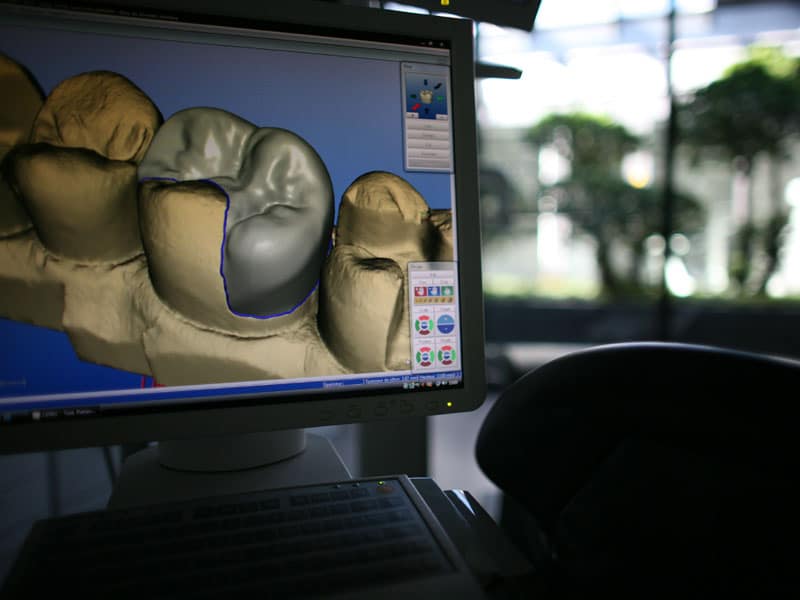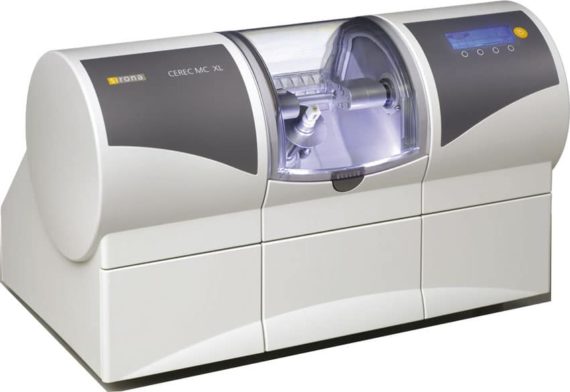Welcome to high-tech dentistry!
A state-of-the-art CEREC CAD-CAM system for your restorations

What does CEREC mean?
CEREC is a cutting-edge technology standing for “Chairside Economical Restorations of Esthetic Ceramic”. It is therefore an ultramodern, complete CAD-CAM (Computer-Aided Design and Manufacturing) system enabling dentists to create complex dental restorations in a single session, without the intervention of an external laboratory.
.
We can also highlight the “Swiss made” nature of this technology, whose development began in 1980 at the University of Zurich by Prof. Mörmann and has continued unabated in recent decades.

What are the indications and at what price?
While many types of restoration can be achieved with CEREC, we favor its application to the area where this tool excels: onlays. An onlay is a restoration on a molar or premolar tooth, necessary when the tooth shows significant decay, in order to restore it to good function and good aesthetics. Whenever possible, we prefer onlays to conventional crowns, in line with the “minimal-invasive” philosophy, as onlays are much more sparing of healthy tooth tissue, and often enable dental vitality to be preserved.
.
Despite the high technology involved, the reduction to a single visit, as well as the absence of laboratory fees, means that CEREC onlays can be offered at a lower rate than conventional onlays. We’ll be happy to provide you with a precise quote and explain the details of our approach.

What is the prognosis and what are the benefits?
Many studies demonstrate a prognosis at least equivalent to onlays made in the laboratory, and the new materials used in recent years now promise results superior to conventional techniques.
Restoration is performed in a single session, so patients don’t have to wait for the laboratory to fabricate their onlay, and save themselves a second appointment, as well as a temporary restoration and a new anesthetic.
Registration of the preparation is optical, so there’s no need for a conventional impression (using impression pastes), which is often perceived as unpleasant.
Machined materials, made of ceramics or high-performance polymers, have superior mechanical properties to those used for “hand-made” restorations in the laboratory. In addition, recent polymers (Lava Ultimate, 3M Espe) offer far superior repair possibilities to conventional materials.